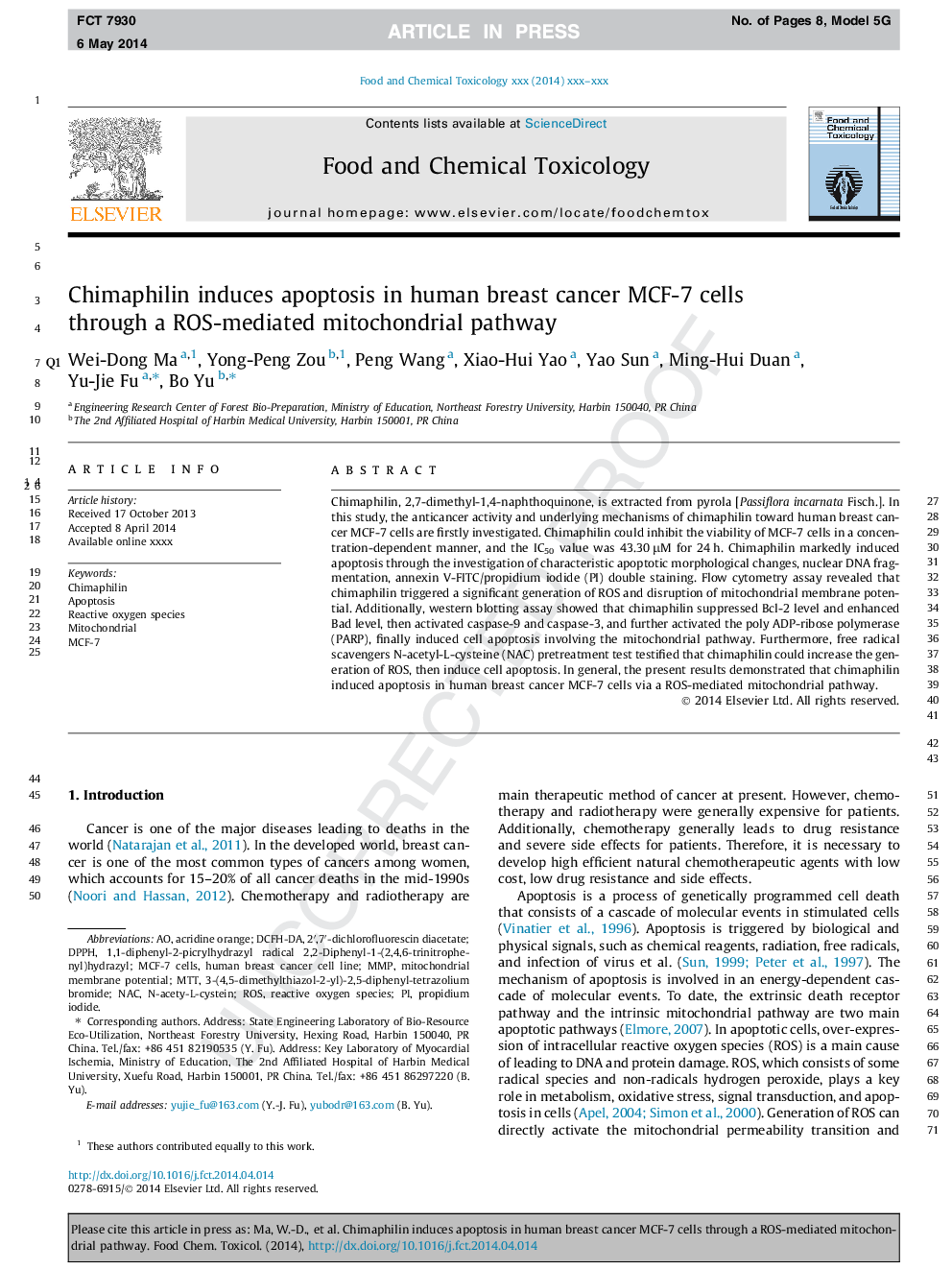| Article ID | Journal | Published Year | Pages | File Type |
|---|---|---|---|---|
| 5850143 | Food and Chemical Toxicology | 2014 | 8 Pages |
Abstract
Chimaphilin, 2,7-dimethyl-1,4-naphthoquinone, is extracted from pyrola [Passiflora incarnata Fisch.]. In this study, the anticancer activity and underlying mechanisms of chimaphilin toward human breast cancer MCF-7 cells are firstly investigated. Chimaphilin could inhibit the viability of MCF-7 cells in a concentration-dependent manner, and the IC50 value was 43.30 μM for 24 h. Chimaphilin markedly induced apoptosis through the investigation of characteristic apoptotic morphological changes, nuclear DNA fragmentation, annexin V-FITC/propidium iodide (PI) double staining. Flow cytometry assay revealed that chimaphilin triggered a significant generation of ROS and disruption of mitochondrial membrane potential. Additionally, western blotting assay showed that chimaphilin suppressed Bcl-2 level and enhanced Bad level, then activated caspase-9 and caspase-3, and further activated the poly ADP-ribose polymerase (PARP), finally induced cell apoptosis involving the mitochondrial pathway. Furthermore, free radical scavengers N-acetyl-L-cysteine (NAC) pretreatment test testified that chimaphilin could increase the generation of ROS, then induce cell apoptosis. In general, the present results demonstrated that chimaphilin induced apoptosis in human breast cancer MCF-7 cells via a ROS-mediated mitochondrial pathway.
Keywords
Related Topics
Life Sciences
Agricultural and Biological Sciences
Food Science
Authors
Wei-Dong Ma, Yong-Peng Zou, Peng Wang, Xiao-Hui Yao, Yao Sun, Ming-Hui Duan, Yu-Jie Fu, Bo Yu,
